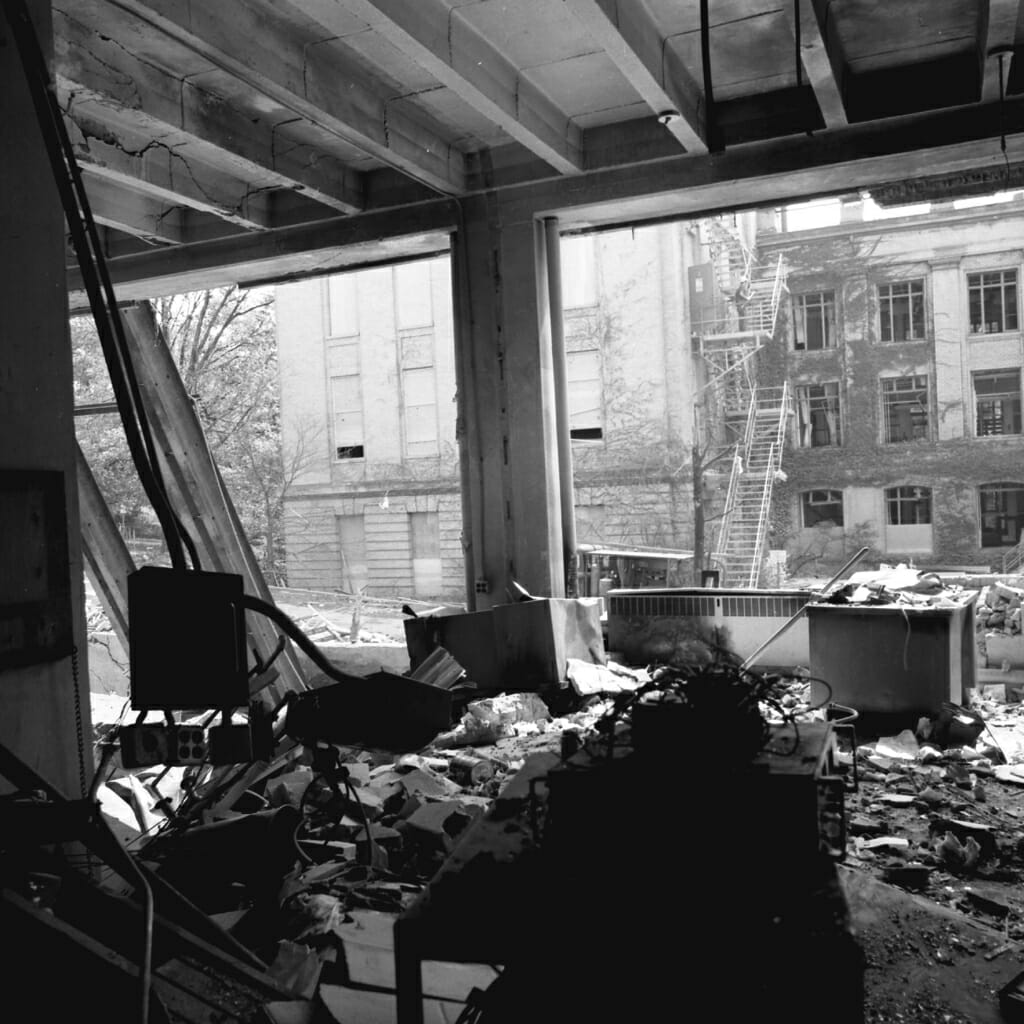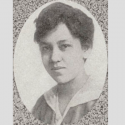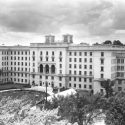When bomb tore through Sterling Hall 50 years ago, he was inside: ‘I still have flashbacks’

The bombing of Sterling Hall on Aug. 24, 1970, was the shocking culmination of years of dissent and despair over the Vietnam War. The bomb killed 33-year-old Robert Fassnacht, a postdoctoral researcher in physics and father of three young children. It injured four others and damaged 26 buildings. UW Archives
On an August afternoon 50 years ago, graduate student Bill Evans bumped into Robert Fassnacht, a postdoctoral researcher, in Sterling Hall at the University of Wisconsin–Madison.
The two didn’t know each other well, but they had talked before. Both were conducting physics experiments in Sterling Hall.
Fassnacht mentioned he’d be working through the night. Evans planned to do the same, so he made a mental note to walk over and chat with Fassnacht at some point.
The conversation never happened. At 3:42 a.m. that morning — August 24, 1970 — a bomb tore through a wing of Sterling Hall, killing Fassnacht. Evans, whose lab was much farther from the blast, felt the building shake but was uninjured.
A short time later, Evans says he and another physics researcher, John Lynch, came upon Fassnacht’s lifeless body.
“That’s the part I’m trying to forget and the reason I haven’t talked about it in all these years,” says Evans, 78, by phone from his home in California. “I still have flashbacks.”
The target of the explosion was the Army Mathematics Research Center, housed on multiple upper floors of Sterling Hall. Four young men orchestrated the bombing as a protest against the center’s research connections with the U.S. military during the Vietnam War.
Fassnacht, 33, working in a basement lab in the Physics Department below the Army Mathematics Research Center, was an unintended victim. His research had no connection to the center. Four others — three in Sterling Hall and one across the street at University Hospital — were injured.
Three of the four bombers — David Fine and brothers Karl and Dwight Armstrong — eventually served prison time. The fourth, Leo Burt, remains at large. Burt and Fine were UW–Madison students at the time.
Evans was pursuing a Ph.D. in atomic physics. He remembers feeling the building shudder, then seeing a wave of dirt and dust blow by a lab door.
He immediately called the university’s overnight phone desk and reported that something terrible had happened at Sterling Hall.
Stepping into the hallway, he tried to head toward the blast’s origin, but thick dust forced him back. He called the UW operator again: “You better get someone over here.”
Evans then went down a basement hallway in the other direction.
“I came upon a night watchman, dazed and covered all over with what looked like pieces of insulation,” he says. “I got him out of the building. There were two policemen nearby, and I yelled, ‘This guy needs help.’”
The night watchman, UW security officer Norbert Sutter, suffered memory impairment, disc problems, and permanent loss of some hearing and vision. The officers who helped Sutter insisted that Evans go with them to University Hospital to be checked for possible injuries. At the time, the hospital was located across Charter Street from Sterling Hall. Evans, certain he was not injured, protested but gave in, then quickly slipped out of the hospital before being evaluated.
Returning to Sterling Hall, Evans says he ran into Lynch. Today, the two differ on the sequence of events that led them to Fassnacht’s body. Both say it’s hard to remember events from so far back — some details remain vivid to them; others have become hazy with time.

Insurance investigators set total campus property damage at $3 million, the equivalent of nearly $20 million in today’s dollars. UW Archives
The blast had awakened Lynch at his apartment just a few blocks away. He remembers racing to Sterling Hall and entering the building alone. He says he saw Fassnacht’s body, then went looking for others dead or alive inside the building.
“There were no policemen, no firemen yet,” says Lynch, 82, who is retired from the National Science Foundation and lives in Florida. “I’m running around looking for anybody alive. The person I found was Bill Evans.”
Evans thinks he ran into Lynch in the crowd that was forming outside Sterling Hall. He recalls the two of them entering the building together and finding Fassnacht’s body.
“He was face down, with a large piece of concrete on him, and his nose and mouth were under water,” Evans says. “There was no question he was dead. The water (due to broken water pipes) was fairly deep by then.”
The two alerted rescuers to Fassnacht’s body. The pair also helped emergency workers find and shut off a gas leak that had led to a fire, Lynch says.
Later that same day, Lynch recounted the story to a reporter for The Capital Times, the city’s afternoon newspaper. The article’s large headline reads, “I Found Bob Under a Foot of Water.”
Given the era’s anti-war fervor, Lynch says it did not surprise him to look out his bedroom window and see Sterling Hall with a cloud of smoke above it. He had stopped spending evenings at Sterling Hall after a conversation with strangers in a Madison bar a few months earlier.
“One guy said to me, ‘Don’t hang around that place at night. Bad things are going to happen there,’” Lynch says. “I didn’t go to the police because people were saying all sorts of crazy things back then. But I felt I had been forewarned.”
Lynch provided prosecutors with a deposition in the case. Following an esteemed career, he received a Distinguished Alumni Fellow Award in 2003 from UW–Madison’s Physics Department. The department recognized him in large part for his early and sustained support at the federal level of the IceCube Neutrino Observatory, a project at the South Pole managed and operated by UW–Madison.
Evans told his story to law enforcement officers but says he otherwise has rarely discussed his involvement with anyone.
 Related: “The Blast That Changed Everything” — a 50-year perspective on the Sterling Hall bombing from alumni who lived through it, from On Wisconsin magazine.
Related: “The Blast That Changed Everything” — a 50-year perspective on the Sterling Hall bombing from alumni who lived through it, from On Wisconsin magazine.
In the spring of 1972, Evans married fellow UW–Madison student Gertrude “Kim” Miller. A few months later, the couple moved to Washington, D.C., where Evans began a job at the U.S. Naval Research Laboratory. He returned to Madison in 1975 to defend his doctoral dissertation but otherwise has not been back to campus.
Evans retired in 2012 following a long career as a research physicist and software architect. He says he’s spent five decades avoiding anything that might trigger a memory of Sterling Hall.
“I tried not to think of it for obvious reasons,” he says. “I guess you could say I disappeared for a good while.”
The experience remains upsetting.
“What happens is it pops up in your memory and then takes about a week to disappear,” Evans says. “I guess it would be like what they talk about with PTSD (post-traumatic stress disorder). If so, I can understand why these people have troubles.”
Late last year, in anticipation of the 50th anniversary of the Sterling Hall bombing this August, UW–Madison issued a call to alumni for memories related to the bombing. Hundreds responded. A sample can be found in the summer 2020 issue of On Wisconsin, the university’s alumni magazine.
Evans was not among those who submitted memories. He says he read the magazine article and found it interesting how the bombing impacted other people. For him, though, it is something he prefers not to reflect on.
“It was so long ago,” he says. “Strange things happen.”




